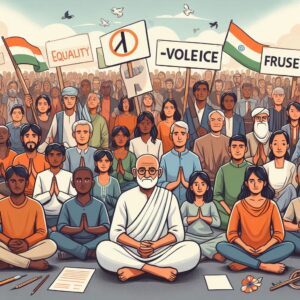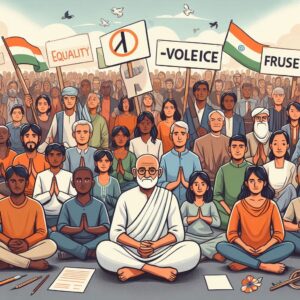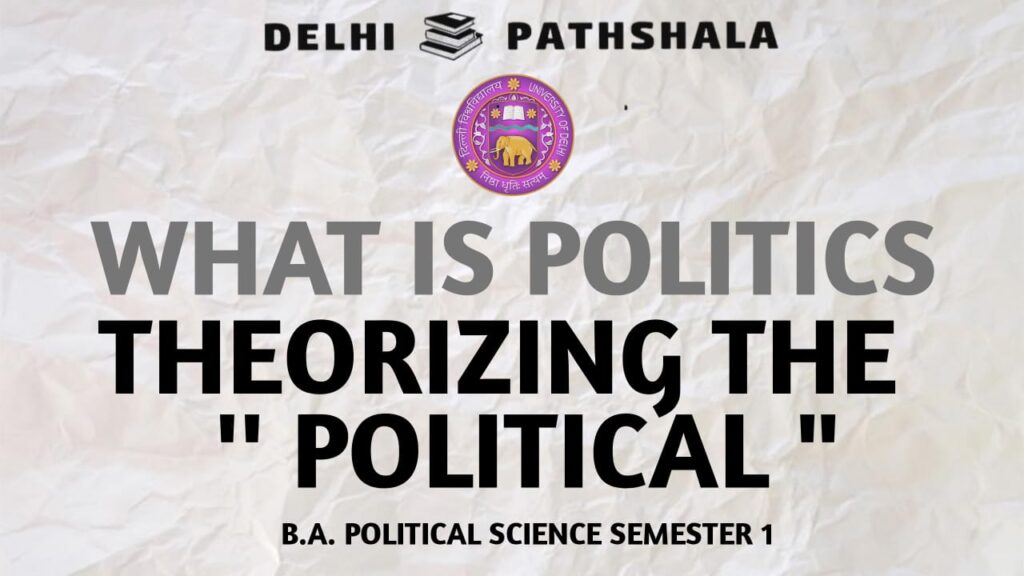In 19th-century India, there were two main ideas that influenced the fight for independence: reformism and anti-reformism. Some people wanted to make slow changes to the current colonial system, while others wanted to completely change it. This text looks closely at both ideas and how they affected nationalism in India during that time.
Reformism in 19th-Century Indian Nationalism:

1. Social and Religious Reforms:
– Raja Ram Mohan Roy:
Known as the “Father of the Indian Renaissance,” Roy worked to change social and religious practices. He wanted to stop Sati and supported education for both men and women.
– Social Reform Movements:
Groups like the Brahmo Samaj and Arya Samaj focused on believing in one God, social equality, and education.
2. Political Reforms:
– Moderate Nationalists:
Leaders such as Dadabhai Naoroji, Gopal Krishna Gokhale, and Womesh Chunder Bonnerjee were part of the Indian National Congress (INC) and pushed for changes in laws and better representation in government.
– Ilbert Bill Controversy (1883):
The push for equal legal rights for Indian and European judges showed how moderate nationalists wanted slow changes in the colonial legal system.
3. Cultural Renaissance:
– Revival of Indian Culture:
Reformers like Swami Vivekananda stressed the importance of appreciating India’s cultural and spiritual heritage to build a national identity.
– Promotion of Vernacular Education:
Teaching in local languages aimed to empower more people and create a sense of cultural unity.
| Related | |
|---|---|
| Partition, Independence and Integration of states (GE) | Social Movements: Peasants, Tribals, Workers, Women and anti-caste movements (GE) |
Anti-Reformism in 19th-Century Indian Nationalism:

1. Radical Nationalism:
– Bal Gangadhar Tilak:
Tilak was a key leader who believed in self-reliance and taking strong actions. He supported mass protests and not cooperating with the British to reach nationalist goals.
– Swadeshi Movement (1905-1908):
This movement started after the partition of Bengal. It encouraged people to stop buying foreign goods and using foreign institutions, showing a desire to resist colonial control.
2. Revolt against Colonial Institutions:
– Opposition to Legislative Councils:
Some leaders did not want to join colonial councils because they saw them as unfair. The more extreme members of the Indian National Congress (INC) criticized the more moderate approach of trying to gain representation in these councils.
– Non-Cooperation Movement (1920-1922):
Led by Mahatma Gandhi, this movement focused on peaceful resistance against colonial rule, moving away from small reforms to stronger actions against British control.
3. Cultural Assertion:
– Swadeshi as Cultural Assertion:
The anti-reformist attitude also included promoting local goods, languages, and traditions, like in the Swadeshi Movement.
– Rejection of Westernization:
Some anti-reformists opposed Western ideas and wanted to return to traditional Indian values to keep the country’s identity.
| Related | |
|---|---|
| GE unit 3- Nationalist Politics and Expansion of its Social Base | Approaches to the Study of Nationalism in India: Nationalist, Imperialist, Marxist, and Subaltern |
Interplay and Evolution:
1. Strategic Shifts:
– The nationalist movement changed from moderate reform to more radical approaches over time, especially due to events like the partition of Bengal and disappointment with British promises.
2. Emergence of Gandhian Ideology:

– Mahatma Gandhi brought together reformist and anti-reformist ideas. He led mass movements like non-cooperation but did so peacefully, showing aspects of both approaches.
3. Legacy:
– The discussions between reformists and anti-reformists continued to shape India’s politics after independence.
In conclusion, the 19th-century nationalist movement in India had different approaches, with some leaders wanting gradual changes within British rule and others pushing for stronger actions to resist and end colonial control. This mix of ideas played a significant role in the struggle for Indian independence.
Major Social and Religious Movements in 19th century:-
In the 19th century, India saw many social and religious movements that helped shape its culture and boost Indian nationalism. These movements aimed to improve or revive different parts of Indian society and also influenced politics, leading to a stronger Indian identity. Here’s a simple overview of some key movements:
1. Brahmo Samaj (1828):
– Founder:
Raja Ram Mohan Roy.
– Goals:
Promote one God, end idol worship, abolish practices like Sati, and encourage reason and science.
– Impact: Laid the groundwork for future reforms and inspired leaders who wanted a modern, united India.
2. Arya Samaj (1875):
– Founder:
Swami Dayananda Saraswati.
– Goals:
Promote the Vedas, oppose idol worship and the caste system, and push for social and educational reforms.
– Impact:
Helped create a united Hindu community and supported social equality, fostering a shared identity among Hindus.
3. Ramakrishna Mission (1897):
– Founder:
Swami Vivekananda.
– Goals:
Spread Vedanta teachings and promote service to others.
– Impact: Highlighted India’s spiritual heritage and encouraged a sense of national duty through humanitarian work.
4. Theosophical Society (1875):
– Founders:
Helena Blavatsky, Henry Olcott, and William Judge.
– Goals:
Explore spiritual traditions and promote brotherhood.
– Impact: Increased interest in Indian religions and attracted thinkers who joined nationalist efforts.
5. Aligarh Movement (1875):
– Founder:
Sir Syed Ahmed Khan.
– Goals:
Improve modern education for Muslims and uplift their community.
– Impact: Helped create a modern, educated Muslim group that played a role in Indian nationalism.
6. Swadeshi Movement (1905-1908):

– Cause:
The partition of Bengal.
– Goals:
Boycott British goods and support local industries.
– Impact: Sparked nationalism by shifting focus to political action against British rule.
7. Sikh Reform Movements:
– Movements:
Singh Sabha and Namdhari.
– Goals:
Reform Sikh practices and strengthen Sikh identity.
– Impact: Helped preserve Sikh identity and highlighted its role in India’s fight for independence.
Interplay with Indian Nationalism:
1. Cultural Renaissance:
– These movements helped create a cultural revival in India, highlighting its spiritual and philosophical traditions, which were important for building national pride.
2. Unity in Diversity:
– The movements promoted unity among different communities by highlighting a common cultural heritage.
3. Political Mobilization:
– Many leaders from these movements joined the Indian National Congress and other groups, helping to engage the public in politics.
4. Legacy:
– The 19th-century reform movements left a lasting impact, shaping Indian nationalism and promoting values like inclusion, social justice, and pride in culture.
Legacy and Continuing Impact:
1. Intellectual Awakening:
– The socio-religious movements of the 19th century encouraged new ideas, questioned old practices, and supported critical thinking, helping to create a modern, educated society.
2. Cultural Synthesis:
– These movements highlighted shared spiritual and moral values across different religions, promoting inclusivity and tolerance as key parts of Indian nationalism.
3. Educational Empowerment:
– Movements, such as the Aligarh Movement, stressed the need for education to empower people, which became crucial for raising politically aware citizens.
4. Role in Independence Movement:
– Leaders from these movements, like Swami Vivekananda, played a key role in India’s fight for independence, with their ideas shaping the nationalist movement.
5. Social Reforms:
– They pushed for social changes, including fighting against caste discrimination and promoting equality, which became part of India’s vision for a fair society outlined in the Constitution.
6. Religious Pluralism:
– The movements encouraged respect and coexistence among different religions, which is a fundamental aspect of India’s diverse identity.
7. Continued Relevance:
– The values from these movements are still important today, influencing conversations about social justice and cultural identity in India.
8. Challenges and Critiques:
– Despite their contributions, some movements faced criticism for being elitist and not reaching everyone, and for not fully challenging existing power systems.
Conclusion:
The 19th-century socio-religious movements were important in shaping India’s culture, politics, and identity. Their influence goes beyond religion, helping to create a sense of national unity. The values they promoted are still important in modern India, contributing to its diverse and inclusive character and supporting the ongoing development of Indian nationalism.


